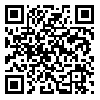BibTeX | RIS | EndNote | Medlars | ProCite | Reference Manager | RefWorks
Send citation to:
URL: http://rjms.iums.ac.ir/article-1-1067-en.html
Background and Aim: Unenhanced Helical Computed Tomography (UHCT) has evolved into a well-accepted method in patients with acute flank pain and suspected ureterolithiasis. The purpose of this study was analysis of UHCT findings in patients with acute flank pain.
Patients and Methods: This is a prospective descriptive cross sectional study. The results were analyzed by descriptive statistic methods. 118 consecutive patients with acute flank pain were evaluated prospectively with UHCT. The images were interpreted for detection of calculi, size and location of the calculi we also sought for the secondary signs of obstruction.
Results: In a total of 118 patients who underwent UHCT, 99 cases had evidence of urinary calculi, 1 patient had appendicitis, 1 patient had ruptured ovarian cyst and 17 had normal UHCT. 81 patients suffered from a solitary stone in the ureter with a mean diameter of 6 mm. 3 cases had two stones one in the ureter and another in the calyx. 15 cases had two stones or more in the calyces. Also secondary signs of obstruction were confirmatory in the interpretation of UHCT. The most reliable secondary signs of ureteral obstruction were respectively hydroureter (73.7%), hydronephrosis (46.6%), periureteric edema (26.3%), perinephric edema (14.1%), and nephromegaly (8%).
Conclusion: The highly accurate diagnostic value of UHCT makes it a suitable method in the diagnosis of patient with acute flank pain.





